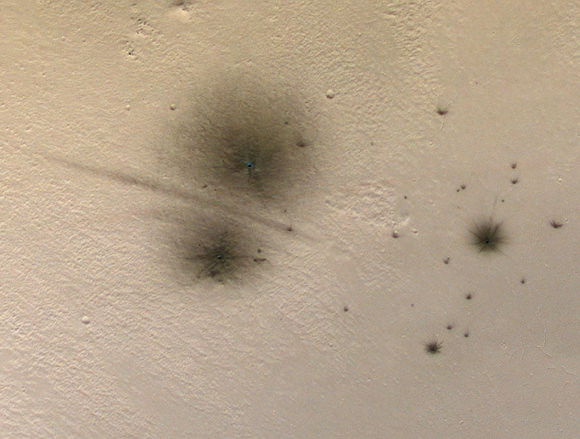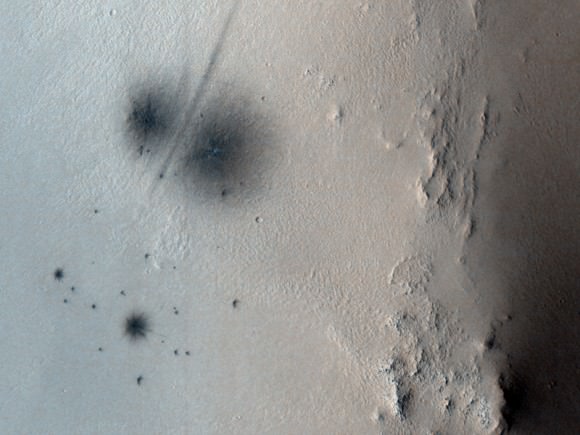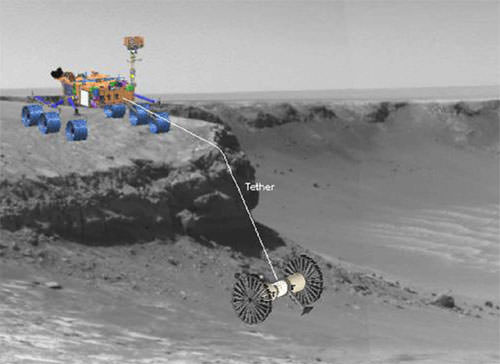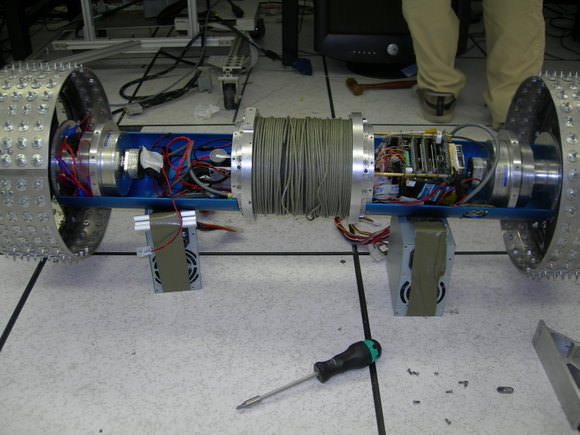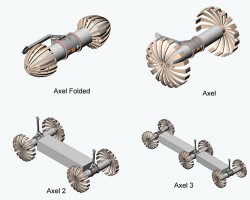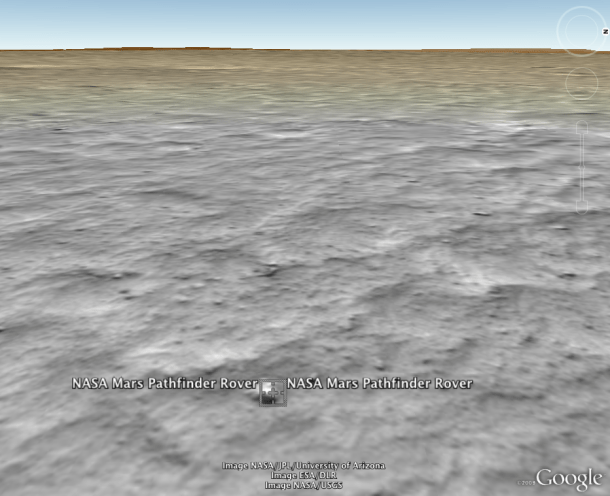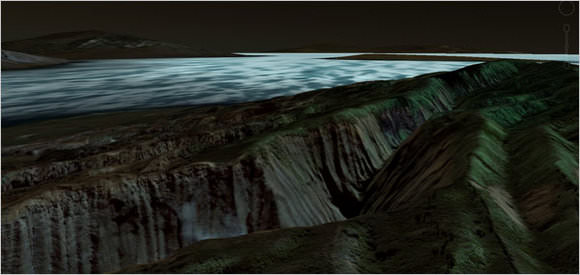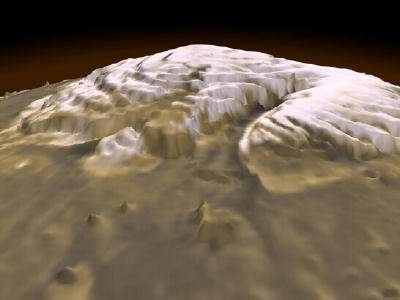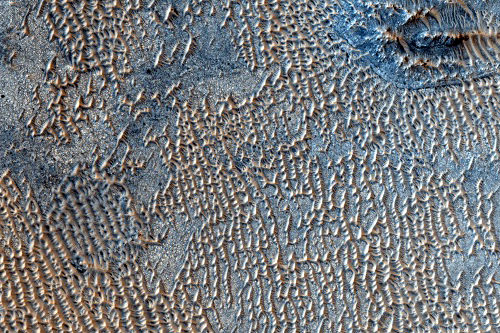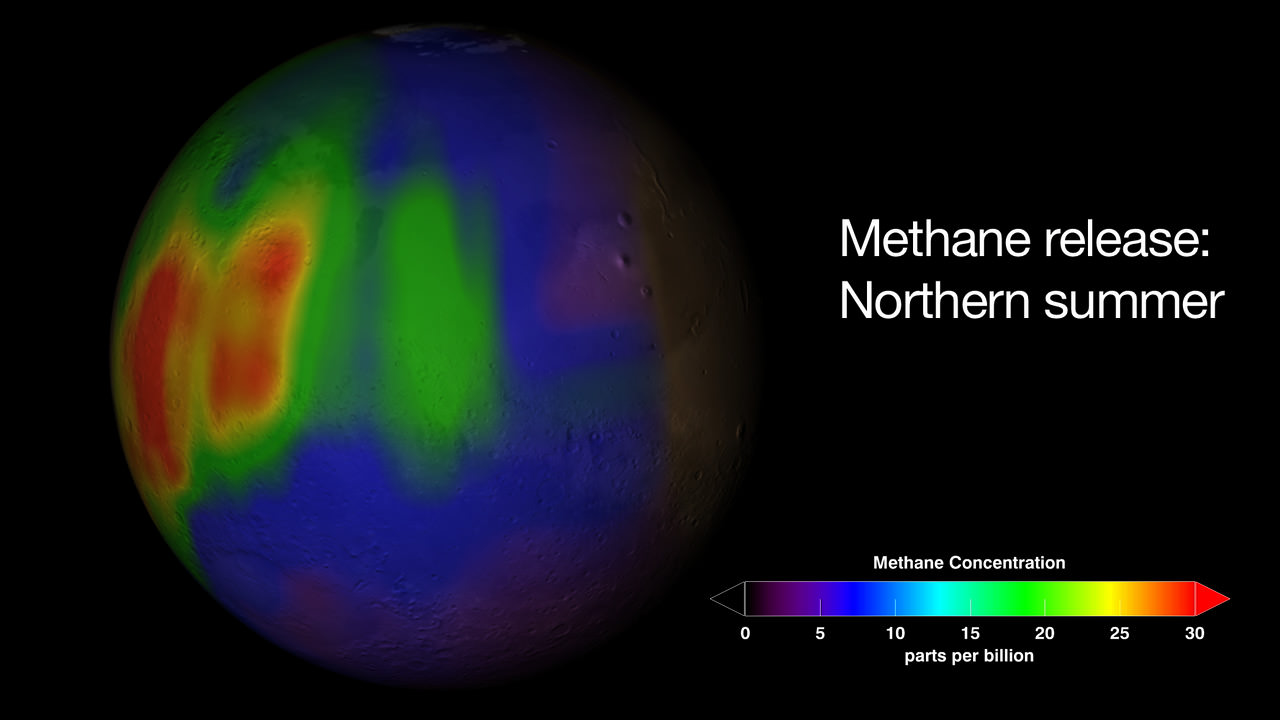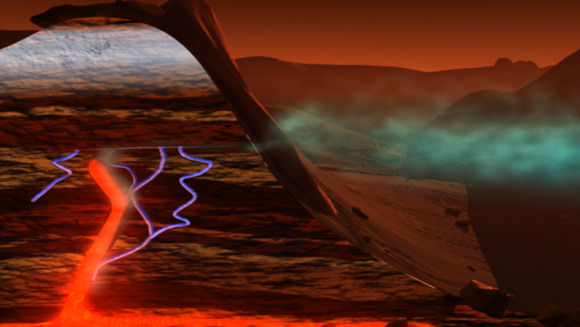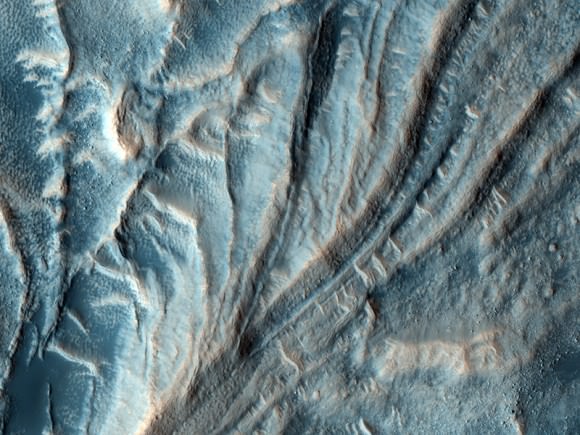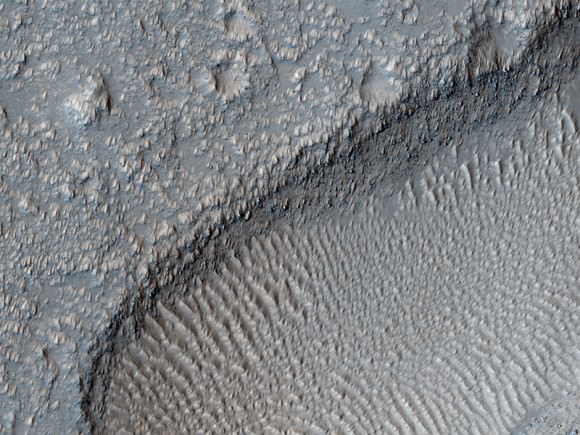[/caption]
The Opportunity rover recently surpassed the five-year mark on Mars. And what did she get as a birthday present? A thorough zapping by a charged particle, perhaps a cosmic ray, which has sidelined the rover for the past several days. “Opportunity stood down for a few sols as a result of a PMA (Panoramic Mast Assembly) error,” said Scott Maxwell, one of the rover drivers for the two Mars Exploration Rovers, Opportunity and Spirit. “This turned out to be due to an SEU (Single-Event Upset), as reported by the on-board motor controller.” An SEU happens when a charged particle whizzes through a transistor on the rover and flips a bit somewhere inside. “Fortunately, the motor controllers can detect and report these events, so that the rover can safely stop,” Maxwell told Universe Today. “We have good reason to hope that Opportunity’s PMA is undamaged and that she’ll be back on the road shortly.” The PMA is the rover’s “neck and head;” it is the mast that holds the Panoramic Cameras, the Navigation Cameras and the Mini-Thermal Emission Spectrometer. It would be a critical blow to the mission to lose any or all of these instruments. The Spirit rover may also have been hit recently by a cosmic ray, causing her to “loose her memory” for a short period. The good news is that Spirit seems to be back to normal and has resumed driving again.
No images from the Pancams or Navcams have been downloaded to Earth for the past four days, since sol 1787 (today is sol 1791 for Opportunity.) Opportunity has been traversing quite quickly on her way to Endeavour Crater, about 12 kilometers (7 miles) away. That distance would match the total distance Opportunity traveled from 2004 to mid-2008. Even at the 100-meter plus pace each sol, which “Oppy” was able to do back in December, the journey could take two years.
“The terrain Opportunity is passing through is good driving terrain,” said Maxwell, “although not quite a parking lot, but nothing she can’t handle. With the help of our “Martian satellite navigation system” (that is, the beautiful high-resolution orbital images we get from MRO), we expect to continue making good time through this dune field on the way to Endeavour.”
We’ll keep you posted on Opportunity’s status.

Spirit resumed driving Saturday, albeit just a short drive, after engineers performed diagnostic tests to determine the cause of “unusual behavior” by the rover last week. On Spirit’s Sol 1800, the rover did not save information into its non-volatile flash memory, so the information was lost when the rover next powered down. She also seemed to be disoriented, and was not able to locate the sun correctly.
“We may not find any data that will explain what happened on Sol 1800, but there’s no evidence that whatever happened then has recurred on subsequent sols,” said Jacob Matijevic of the rover engineering team at NASA’s Jet Propulsion Laboratory, Pasadena. One possibility is that a cosmic-ray hit could have temporarily put Spirit temporarily into a mode that disables use of the flash memory.
Spirit drove only about 30 centimeters (1 foot) Saturday, during the 1,806th Martian sol. The rover team had commanded a longer drive, but Spirit stopped short after its right-front wheel, which no longer turns, struck a partially buried rock. The rover drivers prepared commands Monday for the next drive in a slightly different direction to get around that rock.
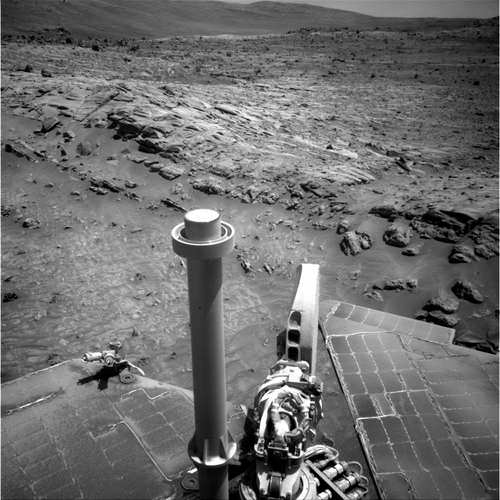
Spirit is just north of a low plateau called “Home Plate.” It spent 2008 on a north-facing slope on the edge of Home Plate so that its solar panels stayed tilted toward the winter sun for maximum electrical output.
Spirit drove down off Home Plate on Jan. 6, 2009. It subsequently checked whether a patch of nearby soil, called “Stapledon,” had a high concentration of silica, like a silica-rich patch of soil Spirit discovered east of Home Plate in 2007. The earlier discovery was interpreted as evidence left by a hot-spring or steam-vent environment. Examination with Spirit’s alpha particle X-ray spectrometer confirmed silica at Stapledon. This indicates that the environment that deposited the silica was not limited to the location found earlier.
Sources: JPL, email exchange with Scott Maxwell


